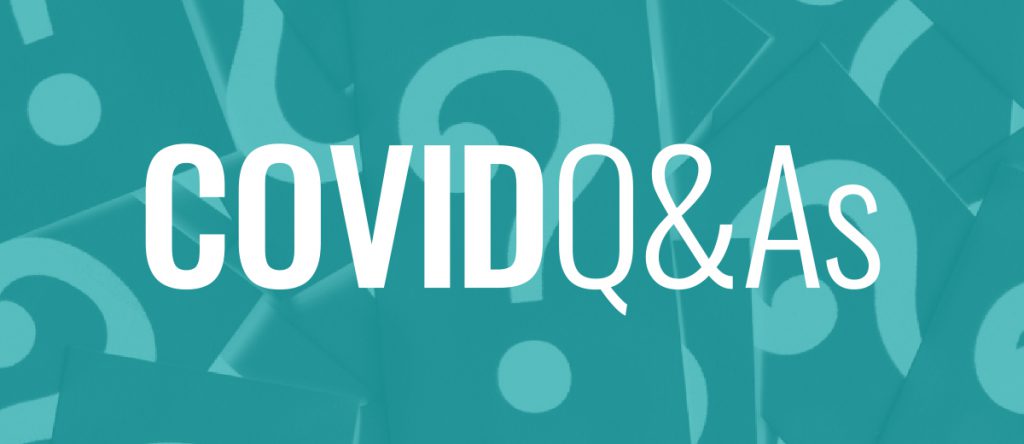
Teachers have questions and we have answers. Here you’ll find a list of questions raised to date, and our responses to them. Check back regularly for updates.
Is it okay to go to my school now?
The directive from federal and provincial public health officials is for all of us to stay at home as much as possible. In turn, that is the position of MTS to its membership.
If there is an urgent need to access classroom resources at your school, you must comply with all public health orders and your employer must ensure social distancing occurs.
Individual circumstances may vary, so do not hesitate to call an MTS staff officer at 204-888-7961 or 1-800-262-8803. They will provide advice and assistance.
Is it alright to use my Instagram, Facebook and Twitter accounts while working from home?
You wouldn’t post to social media while at work under “normal” circumstances, so the same caution applies now. Avoid posting or interacting on social media during the regular work day. Wait until after working hours.
Can I use my personal devices to communicate with students and families?
When it comes to interacting with students and parents, don’t provide or use your personal email or phone number. Boundaries are important.
In a virtual classroom, do I have the same Duty to Report under the Child and Family Services Act?
Yes. All members are required to demonstrate the same level of care and professionalism when engaging in distance learning. This includes a member’s legal obligation to report suspicion of child abuse or neglect to Child and Family Services (CFS) when they have “reasonable grounds to suspect”.
If you have concerns or questions about a situation, call an MTS staff officer 204-888-7961 or 1-800-262-8803 for advice and assistance.
Is it okay to provide tutoring services to students at this time?
Before engaging in private tutoring, members should know:
- Teachers are legally permitted to engage in tutoring on their own time. However, teachers tutor students at their own risk and may not be eligible for MTS support should problems arise from the private tutoring situation.
- Teachers must not tutor their own students for remuneration. The teacher should consult the student’s regular teacher.
- Teachers should not advertise private tutoring through connections at the school, through school or board publications, or through the school board’s computer network.
I feel like I’m not measuring up. What does success look like right now?
Your practice starts with you. So first of all, prioritize yourself. Take time for breaks, nourishment, sleep, and your family. And don’t beat yourself up if your day goes sideways.
- Be realistic. Trying to replicate the pace and work that occurs in schools under normal circumstances is, well, unrealistic.
- Students may not have access to technology, have to compete for computer use, navigate emotional stress from social isolation and face disruption in their routines. All of that impacts teaching and learning.
- Recognizing that internet access is not available equally to all teachers and families at this time, do what you can to maintain consistent communication with students, parents, colleagues, principals, and other supports.
What are the rules when there are no rules?
- Do your best, drawing on what you know and can do. You aren’t in your classroom, so this isn’t “teaching as usual”.
- Lean on your colleagues.
- Keep it simple. Less is more. Start with the learning outcomes and find the way forward. Not every lesson needs to be video, live, or technology-based.
- Trust your professional judgement. Teachers know themselves, their subject area(s) and their students. Do what works.
- Be kind to yourself and others. This is distance learning during a global pandemic. There will be lots of very real challenges for students, teachers and parents during this time. There’s a great resource on the MTS website called The Bounce Sheet. Check it out for tips on what to do to take care of you.
How do curriculum and COVID conditions balance out?
We need to re-imagine curriculum to help prepare students to return to school.
- Use your authentic experiences to complement content. For example, baking with family members helps to understand physical science, chemistry, and fractions.
- Use what’s on hand. Age-appropriate materials sourced from real-world living (chemistry through cooking, horticulture through gardening, physics through landscaping) are great options—and fun, too.
- Work with your divisional ICT staff to problem-solve technology issues and develop guidelines around its use.
How do I choose a distance learning approach?
There’s no cookie-cutter solution. Some subject areas are easily translated to online learning environments while others, like industrial arts, are not. Distance learning should include a combination of synchronous (teachers and students learning together) and asynchronous (students learning independently at different times) approaches. You know your students, so you’ll have a good idea of what will—and will not—work.
How do I assess students under these circumstances?
Many typical assessment practices are not an option right now. Teachers need to adjust and reflect on what is necessary to assess. Deciding whether the learning situation is problem-based or project-based is important and must be communicated to the students early on. Ultimately, your assessment should reflect an understanding of the current teaching and learning context.
In designing assessments:
- assign tasks for students that are rooted in real-world scenarios
- identify the key standards of assessment
- decide on accepted evidence of learning
- determine performance or product/task criteria and develop the rubrics
- Select benchmarks or check-ins for the duration of the assessment, and,
- once complete, encourage your students to share their learning with family and peers.
